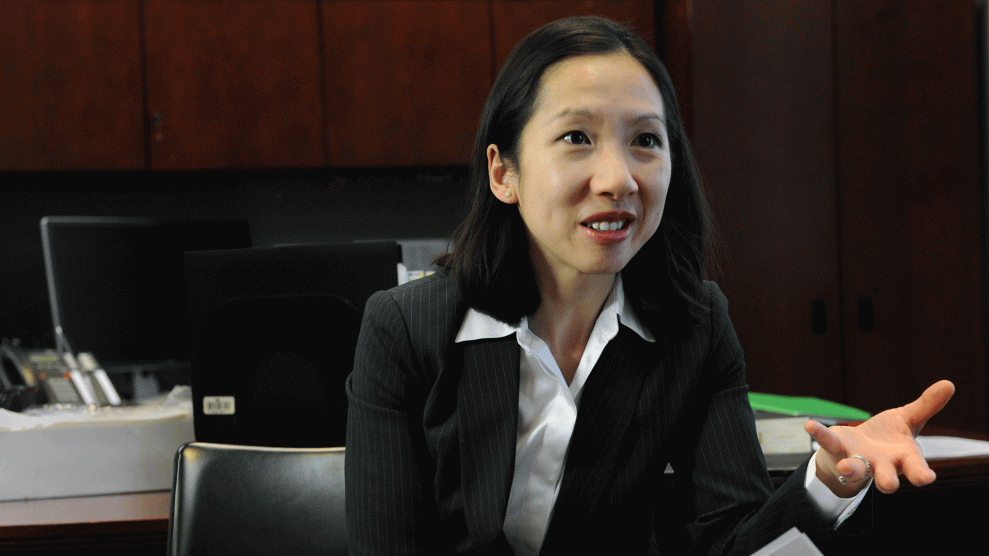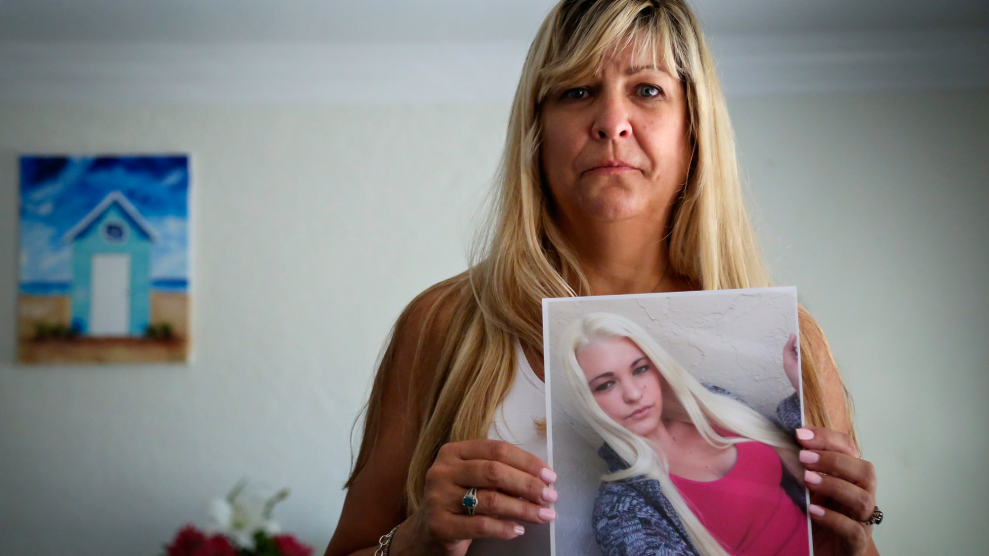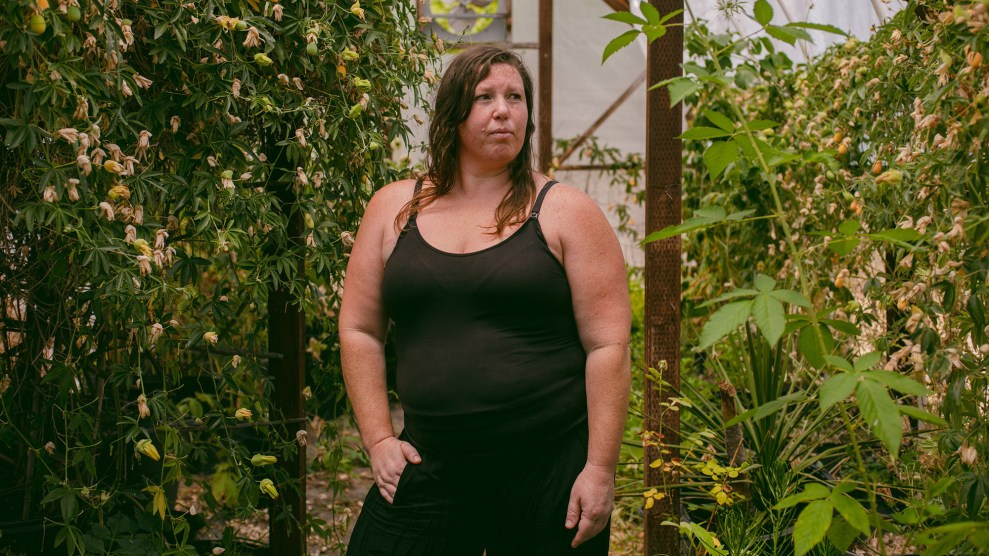
Kim Hairston/Baltimore Sun/ZUMA
Dr. Leana Wen, Baltimore’s 33-year-old health commissioner, has always been a few steps—a few years, really—ahead of the curve. The daughter of Chinese dissidents, Wen grew up in inner-city Los Angeles, where she saw classmates and neighbors suffer from gun violence and drug addiction. At 18, she graduated summa cum laude from California State University. Then came medical school and residency, a Rhodes Scholarship, and work as a professor and emergency room physician at the George Washington University hospital. All the while, Wen made a name for herself as a patient advocate, giving several TED talks and penning a book, When Doctors Don’t Listen.
Her boundless energy is needed in Baltimore. The city of 600,000 has one of the highest overdose rates of any city, with 393 fatal overdoses in 2015. During her tenure, Wen has revamped the way the city responds to clusters of overdose calls and made it easier for drug users and their families and friends to access naloxone, the overdose reversal drug. On the city’s overdose prevention campaign, DontDie.org, she demonstrates how to use it. Last spring, she testified before Congress and spoke on a panel with President Barack Obama about the city’s approach to addressing the crisis.
Despite the whirlwind job—Wen works “all the hours,” as her assistant told The Atlantic’s Olga Khazan—the commissioner takes the long view when it comes to the drug epidemic making the headlines. Substance abuse and addiction aren’t new to Baltimore, she argues, and they’re at the root of seemingly unrelated problems that the city has faced for years. Shortly after the death of Freddie Gray, she wrote a pointed Washington Post op-ed about how the beleaguered city’s high arrest and incarceration rates and seemingly intractable poverty draw back to the need for substance abuse and mental health treatment. “Other reforms will not be successful unless these core issues are resolved,” she wrote.
I talked to Wen about the stigma around addiction and the city’s response to the drug overdose crisis.
Mother Jones: Baltimore’s been getting a lot of attention for the opioid crisis there. What’s going on?
Leana Wen: The issues of addiction tie into every part of our city: poverty, health disparities, mental health, unemployment, lack of housing. Traditionally, it’s been seen that if you have an addiction, it’s a moral failing. It’s a personal choice. Now, we’re calling it a disease. It leads people in our city to wonder, is it because there are now white people in suburban and rural areas that are dying from overdose? We have faced overdose and addiction in our city for decades—it is relatively newer to many other parts of the country.
MJ: How does stigma against drug users affect your work?
LW: There are people in our city dying of overdose at nearly twice the number of those dying from homicide. Around the country, there are more people dying from overdose than there are dying from car accidents. If there were tens of thousands of people dying from any other disease, we would have declared it a public health emergency of epic proportions. Imagine if tens of thousands of people were dying of Zika, or tens of thousands of people are dying of measles—we would be doing everything we can to address it. But unfortunately there is so much stigma surrounding addiction and there is so much misunderstanding about the nature of addiction, we as a society have not understood it to be the disease that it is.
MJ: How is Baltimore tackling this?
LW: We have taken a three-pillar approach in Baltimore. We have to focus on getting naloxone, also called Narcan, into every single person’s hands. We got legislation changed so that I am now the single prescriber to every resident in our city for naloxone. We’ve done 18,000 [naloxone administration] trainings this past year. Everyday people have saved the lives of 620 of their fellow residents because of our efforts. The first focus is on saving lives [and] getting naloxone into everyone’s hands.
The second thing: We have to increase capacity for treatment. The recent surgeon general’s report found that only 1 in 10 people with a disease of addiction can access the treatment that they need—which we would never find accessible for any other disease. We started a 24/7 phone hotline for anyone to access for anything related to substance use. We are working on center to [provide] 24/7 treatment at the time that people need.
The third pillar is increased education and reducing stigma. We started a city wide [naloxone education] campaign called Don’t Die. We’re also educating our doctors on better ways to prescribe pain medications to avoid people from getting addicted in the first place.
MJ: You recently wrote a Baltimore Sun op-ed about the high cost of prescription drugs. Has cost been a big issue when it comes to opioid treatment in Baltimore?
LW: Absolutely. We are limited by the amount of naloxone that we can provide because unfortunately the cost of naloxone has skyrocketed—more than doubled in the last couple of years. There should be no reason as to why this medication is suddenly so expensive. Also, treatment capacity just isn’t there. For substance abuse disorder, we know the treatment that works is a combination of medication and psychosocial treatment. It’s important that we have all of those services available at the time that someone needs it. It’s inappropriate and costing individuals lives if they’re unable to get treatment at the time that they need.
MJ: Baltimore has seen a big spike in fentanyl-related deaths. How are you handling the influx of fentanyl?
LW: Fentanyl is a substance that I know personally very well because I use it in my medical practice in the ER. Fentanyl is many times stronger than morphine, it’s dozens of times stronger than heroin, so if it’s mixed in with other drugs and the person using it doesn’t know, then that person could be overdosing and dying—which is what we’re seeing. We know based on medical examiner data that we have a serious issue with fentanyl in our city: There are nearly 20 times the number of people dying from fentanyl now compared to [2013] in Baltimore. Fentanyl, as we understand it, is being trafficked in from China, Mexico, other places—and so the law enforcement side of targeting trafficking is important. Our side, though, involves educating individuals who use substances about the substances.
MJ: Do you track when fentanyl is making its way into the drug supply on the street?
LW: We have a system where we get real-time alerts from hospitals, from EMS, from fire departments, and from police on where it is that overdose clusters are occurring. We’re then deploying outreach teams immediately to let [users] know that there is now fentanyl in their area. Very likely what has occurred is that there is a batch of drugs being sold within that area, within a small radius, that has high concentrations of fentanyl. This is a relatively new issue across the country so we don’t have data on whether this particular method is successful—we just launched it a couple months ago.
MJ: What does that outreach look like?
LW: We have individuals who often are in recovery themselves and are trusted members of the community to do outreach. They’ll go to street corners, they’ll go to our needle exchange vans, they’ll go to wherever it is that people are to let them know about fentanyl and teach them about naloxone use and hand out Narcan. It’s targeted outreach by individuals who are from the communities that they’re serving.
MJ: Fentanyl is not always lethal, though—what if users want the strong high from fentanyl?
LW: The mind of someone who is addicted to drugs is hard to understand—there are individuals who want the strong stuff. We have found in our city that people who use drugs all know someone who has overdosed, they all know about the problem of fentanyl. And our message will always be, please get into treatment, please stop using drugs. But our other message is, now that there’s fentanyl out there, please don’t use drugs alone. Please make sure that you’re trained to use Narcan so that you can help save someone’s life if they’re overdosing. That’s our message: There is fentanyl here, so be wary and help each other.
















